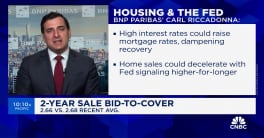The most recent Fannie Mae's Lender Sentiment Survey focuses on the complexities of lending to the condominium market. The company stresses that this type of housing can play an important role in narrowing the supply gap for affordable housing options as well as providing an attractive alternative for homeowners seeking to downsize. However, since the great recession, there has been a significant shortage of both new and existing units for sale.
Condos represent 8 to10 percent of the mortgage market but tend to exist primarily and thus play a larger role in many urban areas. They also present unique risks given the financial responsibility owners share for the operation and maintenance of the common areas and shared amenities. Lenders may also face increased time and costs due to the complexity of underwriting condo project eligibility.
Fannie Mae asked more than 200 senior mortgage executives about market trends and to help identify opportunities to streamline or enhance policy and process requirements and thus more effectively manage condo project risks. Most respondents, 86 percent, said they were currently originating single-family condo mortgages and 71 percent saying they expect their share of those loans as a percentage of their loan volume to remain about the same. Approximately 40 percent reported having dedicated condo project-approval teams.
When asked about ways to improve underwriting to minimize risk, lenders names three risk factors to which they felt secondary market investors should pay more attention. Sixty percent mentioned homeowner association (HOA) financial stability, 33 percent said oversupply or overvaluation, and 31 percent said deferred maintenance. When asked about risk factors they have become more concerned about over the last year, financial instability was still first at 50 percent, followed by deferred maintenance (33 percent), oversupply or overvaluation (28 percent), and hotel/resort use or short-term rentals (24 percent).
Lenders also noted that condo lending involves gathering data from multiple sources, further complicating the process. They tend to rely on the sources they consider most useful; HOA questionnaires, appraisals, and approval lists from the GSEs and FHA.
Even with the complications involved in condo lending, lenders said the greatest opportunities for improving that lending was in the overall loan origination process, borrower income verifications, appraisals, and loss mitigation workout rather than condo review.
Since the majority of lenders told Fannie Mae that they plan to maintain at least their current percentage volume of condo lending, any improvements to information-gathering and data evaluation should benefit both lenders and borrowers. The company says this is especially critical for condo projects with characteristics that lenders frequently associate with increased risk. Lenders reported that they welcome change that improves the review process and further enhances the evaluation of their risk position, as innovation continues to accelerate enhancements for other prioritized loan origination and servicing processes.







